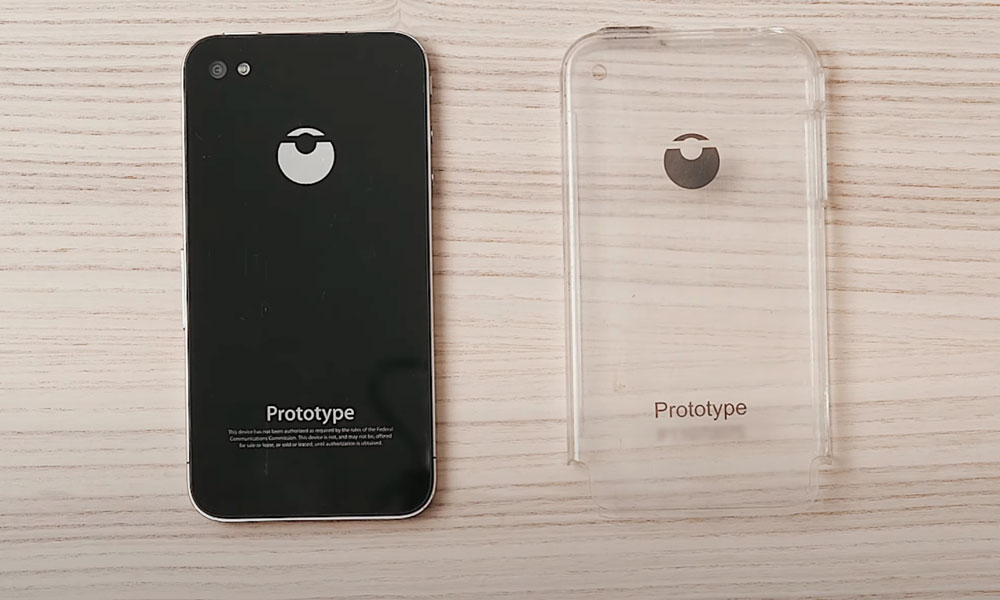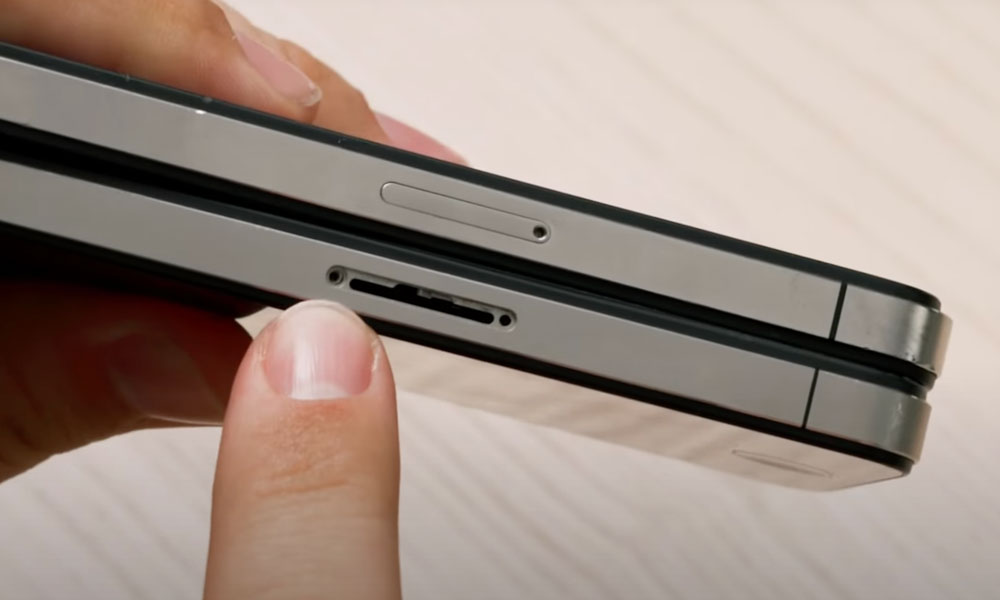Apple’s Early ‘Death Star’ iPhone 4 Prototype Reveals Significant Misdirection
 Credit: DongleBookPro / YouTube
Credit: DongleBookPro / YouTubeToggle Dark Mode
It’s always fascinating when prototype versions of Apple devices slip out. Early prototypes give us both an idea of what Apple was thinking in terms of product design and also the lengths to which the company often goes to keep its product designs a secret.
Apple’s secrecy culture has been around since legendary co-founder Steve Jobs rejoined the company in the late 90s, and we most recently saw one of the most extreme examples of this in the casing used to hide the original iPod. The penchant for disguise also continued with the early Apple Watch prototypes, which were made up to look like an iPod nano instead — something that wouldn’t have been a big stretch, considering the wide variety of iPod nano designs over the years.
Needless to say, Apple’s myriad prototypes have become very popular collector’s items and have created lore of their own, with various legends and tales told about exactly why Apple’s designers and engineers made many of the decisions they did.
Naturally, those still working within the walls of Apple remain tight-lipped about such things. Still, we occasionally do hear interesting stories from former Apple employees — sometimes even from those who were once in very high places within Apple.
More often than not, however, we see merely the prototypes and get some third-hand information from sources who don’t really want to speak on the record. Such is the case with Apple’s infamous “Death Star” prototypes, which bore a logo of the iconic Star Wars planet-killer in an attempt to disguise their true identity.
Now, YouTuber DongleBookPro has gotten their hands on what appears to be a fairly early prototype of the iPhone 4, showing the Death Star logo with hardware that was very different from what we ultimately ended up seeing.
The iPhone 4 was announced at Apple’s Worldwide Developer’s Conference (WWDC) in June 2010 and went on sale in the U.S. and several other countries later that same month. This was actually the last iPhone to ever be announced in the spring, as Apple moved to its more traditional fall announcements the following year with the iPhone 4S.
It’s unclear exactly when this prototype was put together, but based on the hardware inside and what we know of Apple’s typical production timeliness, it was likely from sometime in 2009.
According to DongleBookPro, the insides of this particular prototype are “massively different” from the iPhone 4 we actually got.
Most significantly, it lacks the Retina Display that was the hallmark of the iPhone 4, presumably packing in a display similar to the 2009 iPhone 3GS. We don’t know whether this was an attempt to keep the new higher-density display top-secret or if Apple simply hadn’t yet made the decision to go in that direction when this prototype was put together.
However, some other differences may have been intended for the production of the iPhone 4 and simply got nixed later on. For instance, there are no screw holes on the bottom of the iPhone, providing an aesthetic that we’re quite sure Apple’s design team would have loved. Instead, the screws were tucked away out of sight underneath the edges of the SIM tray slot.
The volume buttons were also smooth, without any visual indicators of what they were for, and the camera lacked the silver ring that came later. These may have simply been machining issues, however, considering prototypes naturally don’t get the same attention to detail given to final production units.
Under the hood, the unit also has entirely different connectors on the internal boards, and not surprisingly, uses different display drivers due to the absence of the Retina display.
The prototype in question also runs the earliest iOS 4 release that’s yet been identified, with a build of 8A133. By comparison, the final iOS 4.0 build delivered to customers on June 21, 2010, had a build number of 8A293. DongleBookPro notes that this 8A133 build also can’t be installed on production iPhone 4 models.
Why a Death Star Logo?
It’s not the first time we’ve heard of Apple prototypes featuring a Death Star logo. In fact, a very similar prototype appeared on eBay back in 2012. Bidding started at $4,500 back then, although the listing vanished from eBay within hours, likely due to Apple’s lawyers getting involved.
There’s been a bit of debate over the years as to why Apple chose to go with a Death Star logo. While we can certainly chalk some of it up to pure whimsy, DongleBookPro was told that it was actually a deliberate attempt at misdirection.
The story goes, Apple was having issues with disclosure of production information at the time, so they chose this logo. Apparently, the hope is customs or other people would think it was some kind of knockoff Disney memorabilia and would consequently not leak any information as they wouldn’t know it was Apple. At least that’s what I’ve been told.
DongleBookPro
While the reference to Disney isn’t quite accurate — the House of Mouse didn’t buy Lucasfilm until 2012 — the idea that Apple wanted to make it look like something from another big franchise isn’t all that far-fetched.
After all, back in 2009, the iPhone was still in its relative infancy, and the two most popular models featured rounded glossy black plastic designs, with virtually no metal or glass to be seen beyond the display.
The iPhone 4 was very different from what had come before, so it’s not a stretch to imagine that anybody who came across this device wouldn’t have associated it with Apple — even if it was completely unbranded. Adding a Death Star logo, however, helped to throw any possible speculation in an entirely different direction.
In fact, back in 2009, many folks would have easily assumed this was a prototype for a new Android smartphone. That’s because the Motorola Droid was released on Verizon around the same time with a huge marketing campaign that heavily promoted it as a direct competitor to the iPhone.
Verizon had, of course, licensed the brand name from Lucasfilm for an undisclosed sum of money, which led to other Star Wars-themed tie-ins, such as the 2010 special edition R2-D2 Droid smartphone.
Although Motorola manufactured the same device for other carriers, the Droid name was exclusive to Verizon; elsewhere, it was known as the Milestone. Verizon also used the Droid branding for its version of the HTC Hero, released at the same time as the more popular Motorola flagship.
So, while it may not be as obvious today, anybody who encountered an unbranded smartphone with a Death Star logo on it in late 2009 would have easily assumed this was something else that Verizon was up to. The idea that it would become one of Apple’s most iconic iPhone designs would have been the furthest from anyone’s mind.







